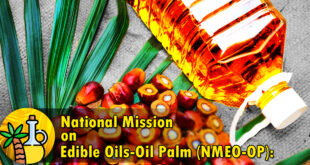- The practice of civil society organisations using representative visuals for fundraising activities concerning development issues such as malnutrition now faces new scrutiny, with the National Commission for Protection of Child Rights (NCPCR) issuing a directive to non-governmental organisations (NGO) not to depict vulnerable children.
- A 2013 campaign by a U.K.-based NGO, Save the Children, titled “Khushi”, featured a 20-month-old baby lying on a hospital bed at a malnutrition treatment centre in Tonk, Rajasthan. The baby was videographed as a helpless and needy child, with the camera zooming into a close-up of her face and eyes as she looks morosely into it.
- The narrator describes her as a malnourished child in need of help and makes an ardent appeal: “Please, will you help? Please, donate ₹500 a month and make a difference.”
- The campaign, which aimed to raise money for the NGO’s initiative against malnutrition, came under scrutiny from several corners over the use of the images of a vulnerable child.
- The campaign ran for several years even as some within the NGO were shocked that their organisation did not know the latest on the well-being and whereabouts of the child featured in its campaign.
- Now, another campaign by the same NGO, titled “Anand”, depicting an emaciated infant whose ribs can be seen sticking out under his skin, is at the centre of a fresh controversy that has sparked a debate on the imagery among child rights organisations.
- On December 2, the NCPCR wrote to NGOs across the country on the practice of “raising funding, domestic as well as international, for their NGOs through advertisement while showing vulnerable minor children in deplorable conditions”.
- The letter asked NGOs to refrain from such depiction as it amounted to a violation of the Juvenile Justice Act, 2015.
- This missive was preceded by another letter from the Ministry of Women and Child Development (MoWCD) on November 2 to all States and Union Territories.
- The letter named Save the Children and its campaign to tackle malnutrition in tribal children by raising ₹800 from the general public, and called it misleading on the ground that the issue of malnutrition was being “vigorously pursued” by the government through its Saksham Anganwadi and Poshan 2.0 scheme.
- It also asked States to “report” similar incidents involving NGOs, take “appropriate measures to expose the false information” and “alert beneficiaries about false claims made by them”. Both the letters were based on a detailed complaint by a Rajya Sabha member.
- SudharshanSuchi, CEO of Save the Children, did not respond to a questionnaire e-mailed to him, seeking details of his organisation’s policy on the use of imagery involving children, and the whereabouts of the child “Khushi”.
Images taken down
- The images from the “Anand” campaign have since been pulled down and the NGO’s website is now replete with images of happy children.
- Save the Children’s “statement of principles” regarding the use of imagery, specifically the portrayal of children in a 2017 document — it updated its media policy following widespread criticism — available on its website states its “clear priority is to generate the response that will help fund our work” which requires that “we create and publish challenging, hard-hitting imagery”.
- However, efforts are made to ensure it does not objectify, belittle or dehumanise children, the NGO says.
- Informed consent of the subject or their family is obtained for photos and it is ensured that they understand the use to which their images may be put as well as the possible consequences, the NGO says.
- It adds that rigorous procedures are also undertaken to minimise any risk to the children, and no more than two of the following pieces of information are given out: a child’s full name, image and location.
- The Ethical Image Policy of another NGO, WaterAid, also pays attention to what is allowed or not allowed in post-production, and how long images can be used.
- In order to ensure visual representation is more egalitarian and participatory, it has also started hiring and training local people to work as “photo, film and story gatherers”, and trains children and young adults in Pakistan and Nepal to use cameras to communicate issues that affect them.
- The UNICEF’s “Eight quick steps to ethical imagery” suggests asking the question — “If she/he were my child, how would I want her/him portrayed” It also warns against the other extreme of using happy and cute images of children as they “tend to objectify children into an idealised and sentimentalised happiness that negates the complexity of their real life”.
- Many in the civil society have welcomed the government’s directive.
- “We ensure that we don’t present children in their vulnerability, though those representations appeal most to the people. Instead we present strength and dignity. The poorest of children do laugh and have managed to live with dignity.
- Therefore, the government’s position is the right one,” Kavita Ratna, director, advocacy and fundraising, The Concerned for Working Children, said.
- But the agency of the subjects involved is crucial and if it is the decision of the community to be depicted in a difficult situation, then that is also taken into account, she added.
- Ratna, however, points out that there is also a need for a mind shift as the donor community appears to need or respond to evocative pictures in fund-raising.
- The government’s concern over visual representation of children comes at a time when it has doggedly challenged global reports on rising levels of malnutrition in India.
- In 2020, a warning on how COVID-19’s impact on access to healthcare services and food systems could result in a rise in malnourished children led to Smriti Irani, the Minister for Women and Child Development, calling up the UN headquarters.
- The Union government has also repeatedly rejected India’s performance in the Global Hunger Index and questioned the methodology. India was ranked 107 among 121 countries in 2022 on the index.
SOURCE: THE HINDU, THE ECONOMIC TIMES, PIB
 Chinmaya IAS Academy – Current Affairs Chinmaya IAS Academy – Current Affairs
Chinmaya IAS Academy – Current Affairs Chinmaya IAS Academy – Current Affairs



